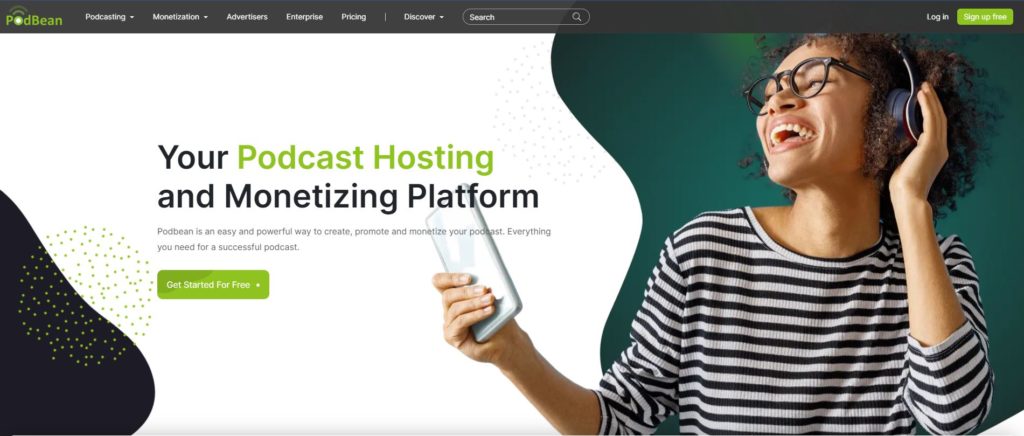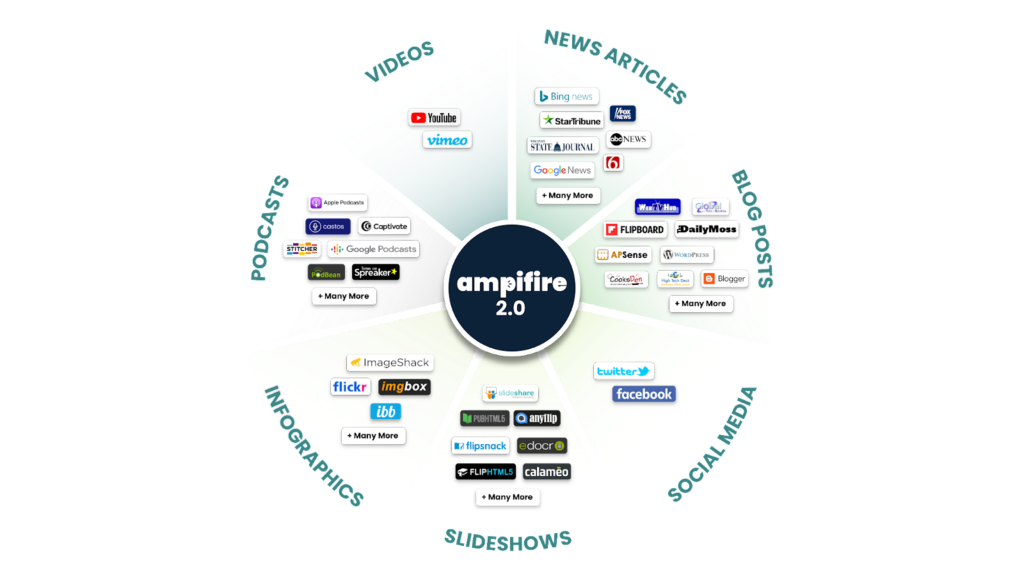
Is PodBean Good For SEO?
To address whether PodBean is good for SEO, let’s first clarify what SEO – Search Engine Optimization – means for a website. SEO is a set of practices aimed at increasing the visibility and ranking of a website on search engines like Google. It’s about making your site more attractive to both search engines and users.
| Website: | podbean.com |
| Founded: | 2006 |
| Type of Platform: | Podcast Hosting Platform |
| Key Features: | Comprehensive podcast statistics, customizable themes, video podcast hosting |
| Content Types: | Podcasts and various audio content |
| Popular Content: | Podcasts, audiobooks, storytelling, interviews, educational content |
| Target Audience: | Podcasters, content creators, businesses |
| Domain Authority: | 91/100 |
Now, let’s talk PodBean. Founded in 2006, PodBean has emerged as a robust podcast hosting platform. It’s not just a space for hosting; it’s also an ecosystem for podcast discovery, distribution, and monetization. Podcasters, ranging from hobbyists to professionals, find PodBean’s user-friendly interface, diverse podcasting tools, and comprehensive analytics particularly useful. Its key features include unlimited hosting, distribution to major directories, monetization options, and live streaming capabilities.

So, is PodBean good for SEO? Absolutely, especially if you’re in the podcasting game. It’s about leveraging PodBean’s domain authority and its ability to showcase your content to a broader audience. But remember, SEO success with PodBean also depends on how effectively you integrate your podcast content with other SEO strategies like keyword optimization and cross-platform promotion.
Are PodBean Links Nofollow or Dofollow?
PodBean typically uses Nofollow links. In the digital marketing space, understanding the nature of backlinks, especially the distinction between “Nofollow” and “Dofollow,” is pivotal. A “Dofollow” link is like a vote of confidence to search engines, implying that the linked content has value, and can contribute positively to the site’s search engine ranking. On the flip side, a “Nofollow” link tells search engines to disregard the link in terms of SEO value, though it can still drive traffic to the destination site. In digital marketing, dofollow links are favored, but nofollow links also hold considerable importance.

Now, onto the main question: Are PodBean backlinks “Nofollow” or “Dofollow”? PodBean, as a platform dedicated to podcast hosting and distribution, primarily employs ‘Nofollow’ links. This approach aligns with its focus on content distribution and audience engagement, rather than directly influencing the SEO rankings of the linked sites. Remember, while ‘Nofollow’ links from PodBean might not directly boost your SEO, they’re valuable for driving traffic and enhancing your content’s reach.
How Do I Add a Backlink to PodBean?
A backlink is essentially a link from one website to another. They’re like digital referrals; when your website links to another site, it’s guiding your audience to that destination for more information or related content.
Adding a backlink to PodBean, a leading podcast hosting platform, involves a few thoughtful steps to ensure it’s effective and relevant. Here’s a comprehensive guide:
The Steps to Adding a Backlink
- Identify Appropriate Content: First, pinpoint content on your website that would naturally lead to a podcast on PodBean. This could be a blog post, an article, or any content that can be logically connected to a podcast topic.
- Record Your Podcast Episode: Once you’ve determined what your podcast should be about, it’s time to start recording. Remember, the more relevant your content is to your niche, the easier it is to find success.
- Integrate the Link Naturally: Within your podcast, find a seamless way to introduce your website or business. It could be a reference, a recommendation, or an extension of what you are discussing.
- Insert the Link: Embed the link to your website into the podcast description. The link’s anchor text, which is the clickable text, should feel natural and be relevant to your content or the topic it covers.
- Set as Nofollow: To align with best SEO practices, make sure the backlink is set as ‘Nofollow’. This is usually done by adding
rel="nofollow"in the HTML of the link. - Review and Test: After embedding the link, review your content to ensure it fits naturally and test the link to make sure it leads correctly to the intended PodBean podcast.
- Track Performance: Keep an eye on your analytics to see how this backlink affects your website’s traffic and user engagement.
By following these steps, you can successfully create a backlink to PodBean, enriching your content and directing your audience to valuable, related audio content. Remember, the key to a successful backlink is its relevance and the value it adds to your audience’s experience.
Best Practices for Posting on PodBean
When it comes to posting on reputable podcast platforms like PodBean, Castro, or Google Podcasts, following certain best practices can significantly enhance your podcast’s success and listener engagement. Here’s a rundown of the do’s and don’ts for posting on PodBean:
The Do’s and Don’ts of Posting to PodBean:
Do’s:
- Understand Your Audience: Knowing your listeners’ preferences is crucial. Tailor your content to match their interests and keep them engaged.
- Focus on High-Quality Audio: The quality of your audio can make or break your podcast. Invest in good recording equipment to ensure clear, crisp sound.
- Engaging Content is Key: Your content should be captivating and well-structured. Keep your audience hooked with interesting topics and dynamic storytelling.
- Use Descriptive Titles and Tags: Clear, descriptive titles and relevant tags help listeners find your podcast easily. They play a vital role in increasing visibility.
- Consistency Counts: Regularly uploading episodes can help build a loyal listener base. Stick to a consistent schedule.
Dont’s:
- Avoid Plagiarism: Originality is paramount. Ensure your content is unique to maintain credibility and respect intellectual property laws.
- Don’t Neglect Listener Feedback: Engage with your audience and consider their feedback. It can provide valuable insights for improving your podcast.
- Steer Clear of Inappropriate Content: Follow PodBean’s guidelines regarding content. Avoid anything that could be deemed offensive or controversial.
- Don’t Overlook SEO: Even for audio content, SEO matters. Use relevant keywords in your descriptions to enhance discoverability.
By adhering to these best practices, you can optimize your podcast’s performance on PodBean. It’s about striking the right balance between quality content, technical soundness, and effective engagement with your audience. Keep these tips in mind, and you’re well on your way to podcasting success on PodBean.
Does AmpiFire Submit to PodBean?
When it comes to the relationship between AmpiFire and PodBean, it’s essential to understand the specifics of what AmpiFire offers. AmpiFire is a content amplification engine that aims to increase the reach and visibility of your content across multiple online platforms. But does it submit directly to PodBean? The answer is yes, AmpiFire does can directly submit content to PodBean.

To get a clearer picture, here are four key points about how AmpiFire operates:
- Broad Content Distribution: AmpiFire spreads your content across various channels, including news sites, blogs, video platforms, and more. This widespread distribution can increase your digital footprint and indirectly lead audiences to your PodBean content.
- Content Variation and Syndication: The platform creates different versions of your original content (like articles, press releases, and videos) and syndicates them across its network. This could potentially drive traffic to your PodBean podcasts as part of a broader content strategy.
- Targeted Exposure: With AmpiFire, your content is tailored to reach specific audience segments. If your PodBean content aligns with these segments, AmpiFire’s targeted approach could inadvertently drive listeners to your PodBean podcasts.
In essence, while AmpiFire does directly submit content to PodBean, its approach to amplifying online presence goes beyond simply boosting your PodBean content. It’s about leveraging the ripple effect of AmpiFire’s broad distribution and SEO capabilities to indirectly support your business’s endeavors.
Tired of not seeing the results that you want?
Discover AmpiFire and get your press releases be seen on Google News, YouTube, SlideShare, Apple Podcasts and many more…
Click Here To Learn More
Ready to elevate your podcast game with PodBean and explore the indirect benefits of platforms like AmpiFire? Dive in and discover how these tools can transform your digital presence. What innovative strategies will you deploy next in your content journey?
Frequently Asked Questions
PodBean, with its impressive domain authority, can positively impact your SEO strategy, especially if you’re a podcaster. While it’s not a traditional SEO tool, leveraging PodBean’s reputation and audience reach can increase your digital visibility, though it may not be as direct in effect as platforms like WordPress or Medium.
Links from PodBean are predominantly ‘Nofollow’, meaning they don’t pass on SEO benefits like ‘Dofollow’ links do, but they still play a crucial role in driving traffic. While they don’t boost your search engine ranking like ‘Dofollow’ links from LinkedIn, they’re valuable for audience engagement.
Adding a backlink to PodBean involves creating relevant content and embedding the link naturally. This process, more intricate than adding links on platforms like Twitter, requires strategic placement to ensure audience relevance and engagement.
Yes, AmpiFire can submit directly to PodBean. It amplifies content across multiple channels, which can indirectly enhance your PodBean presence, unlike direct submission platforms like Buzzsprout or Anchor.
Posting on PodBean demands high-quality audio and engaging content, similar to platforms like Spotify or Apple Podcasts. The key difference lies in PodBean’s unique user base and podcast-centric features, which necessitate a tailored approach for effective engagement.
Since AmpiFire can directly link to PodBean, its widespread content distribution can directly boost your content’s visibility on PodBean and other platforms.
